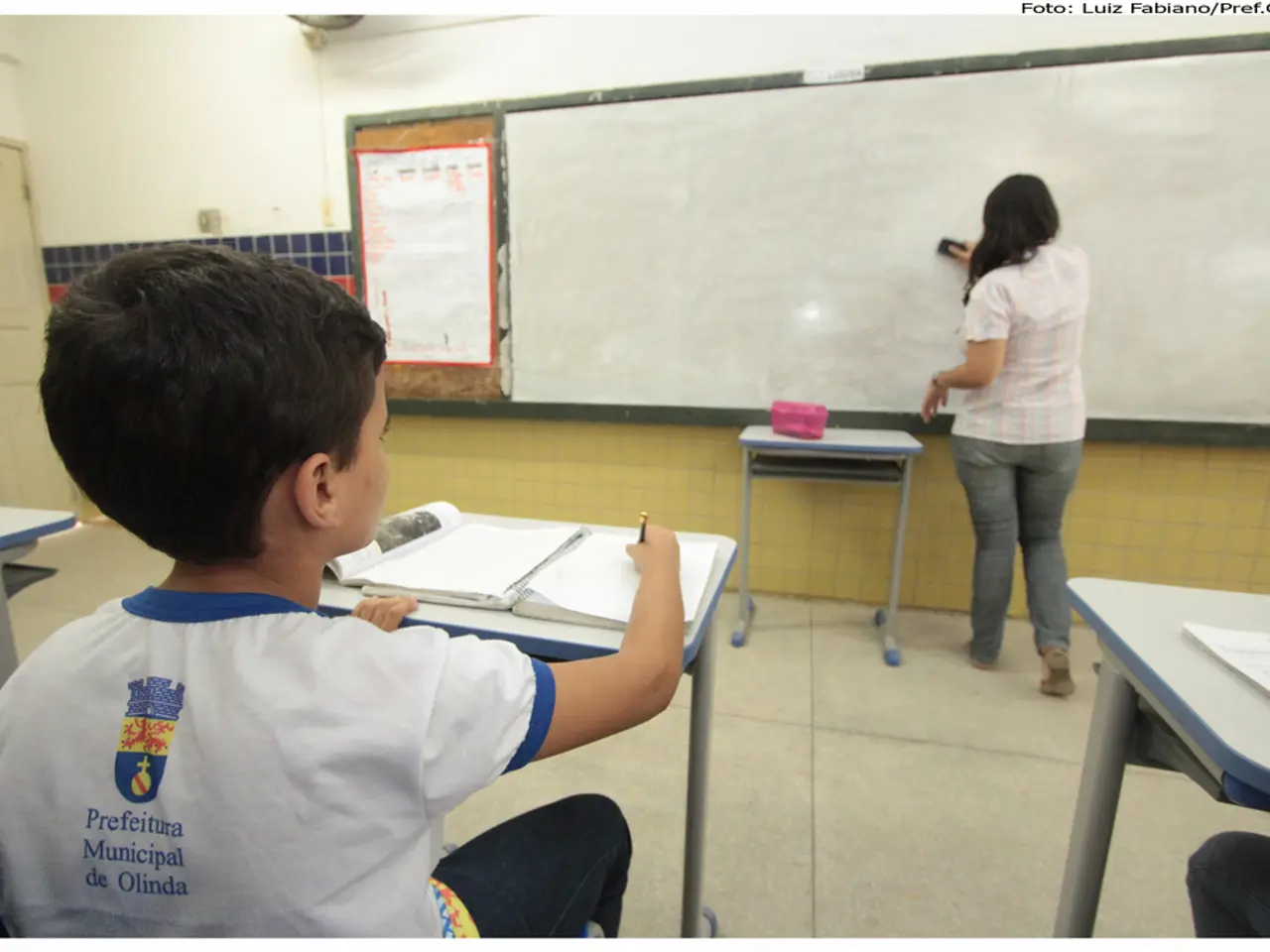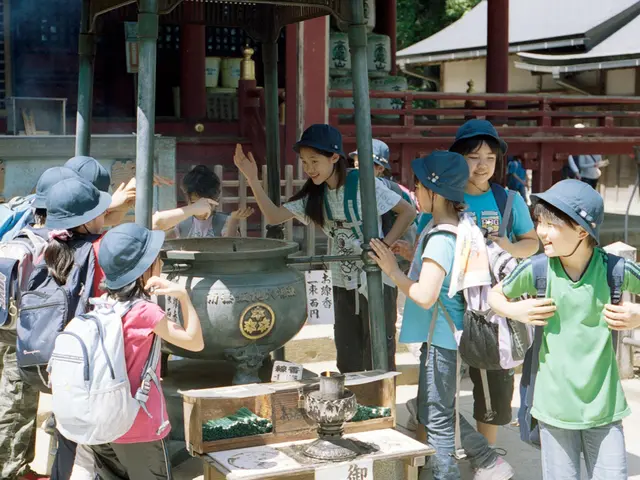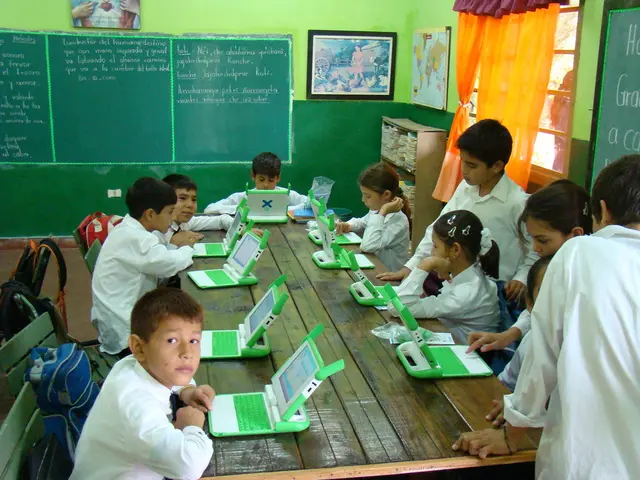Teacher as a Career Change, yet Daily School Life Turned into a Living Hell - Struggling New Teacher's School Day Turned into Turmoil
In a bustling elementary school, a career-changer teacher named Paula is navigating the challenges of maintaining order in her classroom. One day, as she attempts to make an important announcement about materials needed for a crafting session on Thursday, she is met with repeated interruptions from a student named Paul.
Despite her best efforts, Paula's announcement is disrupted three times, making it impossible for her to complete the message in peace. Frustrated, she resorts to a method that, while not up-to-date, reveals a sense of desperation. Threatening to have the students copy the school rules if they do not want to know what materials are needed for crafting, she manages to silence the class, at least temporarily.
However, consequences soon follow her unconventional approach. The school administration, understanding the importance of proactive, respectful, and engaging strategies, emphasises the need for modern classroom management techniques.
Modern methods to manage classroom interruptions focus on creating a supportive and engaging environment. For instance, Paula could have organised the physical space to reduce distractions, such as positioning desks so all students can easily see the whiteboard, keeping pathways clear, and creating a warm, welcoming atmosphere.
Clear, calm redirection is another effective approach. Consistent verbal prompts, nonverbal cues, or proximity control can gently redirect behaviour without escalating tension. Establishing fair and simple consequences, such as a quick private conversation, loss of a privilege, or a "cool-down" period, can be effective without feeling punitive.
The call and response technique is also a useful method to regain students' attention quickly and positively. For example, Paula could have used the phrase "1, 2, 3, eyes on me" followed by "1, 2, eyes on you." Lastly, utilising effective feedback strategies, including peer-to-peer feedback, helps students understand and regulate their behaviour.
In a school facing a shortage of teachers, Paula's experience serves as a reminder of the importance of adopting modern, less desperate methods to manage classroom interruptions. By fostering a respectful, supportive classroom culture, teachers can manage interruptions through engagement, clear communication, and well-planned environment rather than desperation or punishment.
Paula should consider revising her community policy to incorporate modern methods for managing classroom interruptions, such as vocational training in effective classroom management techniques, to support her personal growth and ensure education-and-self-development for both herself and her students. By implementing these strategies, she can focus on creating a conducive learning environment that fosters engagement and proactive behavior, encouraging personal growth for her students as well.




